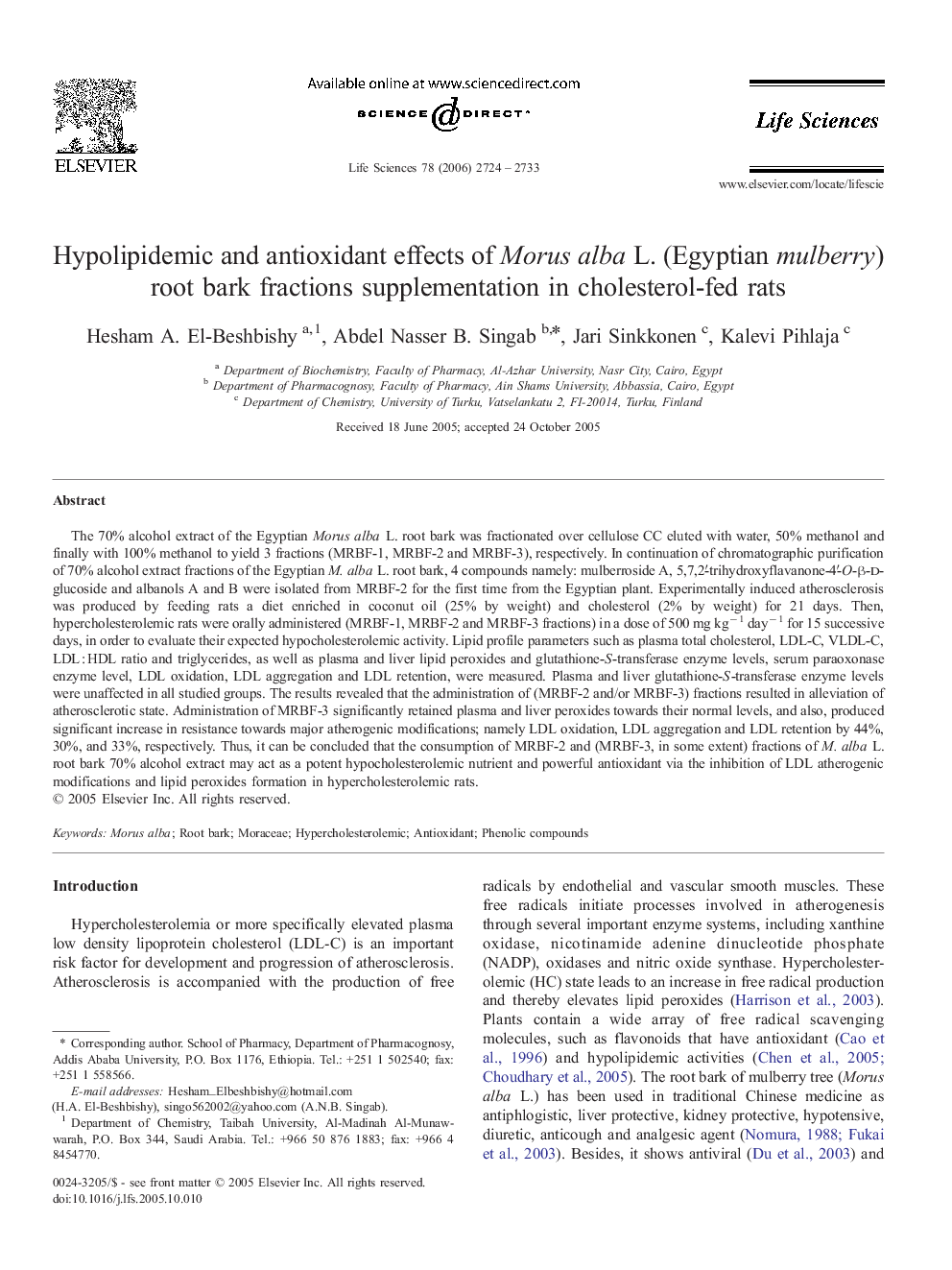| Article ID | Journal | Published Year | Pages | File Type |
|---|---|---|---|---|
| 2554234 | Life Sciences | 2006 | 10 Pages |
The 70% alcohol extract of the Egyptian Morus alba L. root bark was fractionated over cellulose CC eluted with water, 50% methanol and finally with 100% methanol to yield 3 fractions (MRBF-1, MRBF-2 and MRBF-3), respectively. In continuation of chromatographic purification of 70% alcohol extract fractions of the Egyptian M. alba L. root bark, 4 compounds namely: mulberroside A, 5,7,2′-trihydroxyflavanone-4′-O-β-d-glucoside and albanols A and B were isolated from MRBF-2 for the first time from the Egyptian plant. Experimentally induced atherosclerosis was produced by feeding rats a diet enriched in coconut oil (25% by weight) and cholesterol (2% by weight) for 21 days. Then, hypercholesterolemic rats were orally administered (MRBF-1, MRBF-2 and MRBF-3 fractions) in a dose of 500 mg kg− 1 day− 1 for 15 successive days, in order to evaluate their expected hypocholesterolemic activity. Lipid profile parameters such as plasma total cholesterol, LDL-C, VLDL-C, LDL : HDL ratio and triglycerides, as well as plasma and liver lipid peroxides and glutathione-S-transferase enzyme levels, serum paraoxonase enzyme level, LDL oxidation, LDL aggregation and LDL retention, were measured. Plasma and liver glutathione-S-transferase enzyme levels were unaffected in all studied groups. The results revealed that the administration of (MRBF-2 and/or MRBF-3) fractions resulted in alleviation of atherosclerotic state. Administration of MRBF-3 significantly retained plasma and liver peroxides towards their normal levels, and also, produced significant increase in resistance towards major atherogenic modifications; namely LDL oxidation, LDL aggregation and LDL retention by 44%, 30%, and 33%, respectively. Thus, it can be concluded that the consumption of MRBF-2 and (MRBF-3, in some extent) fractions of M. alba L. root bark 70% alcohol extract may act as a potent hypocholesterolemic nutrient and powerful antioxidant via the inhibition of LDL atherogenic modifications and lipid peroxides formation in hypercholesterolemic rats.
